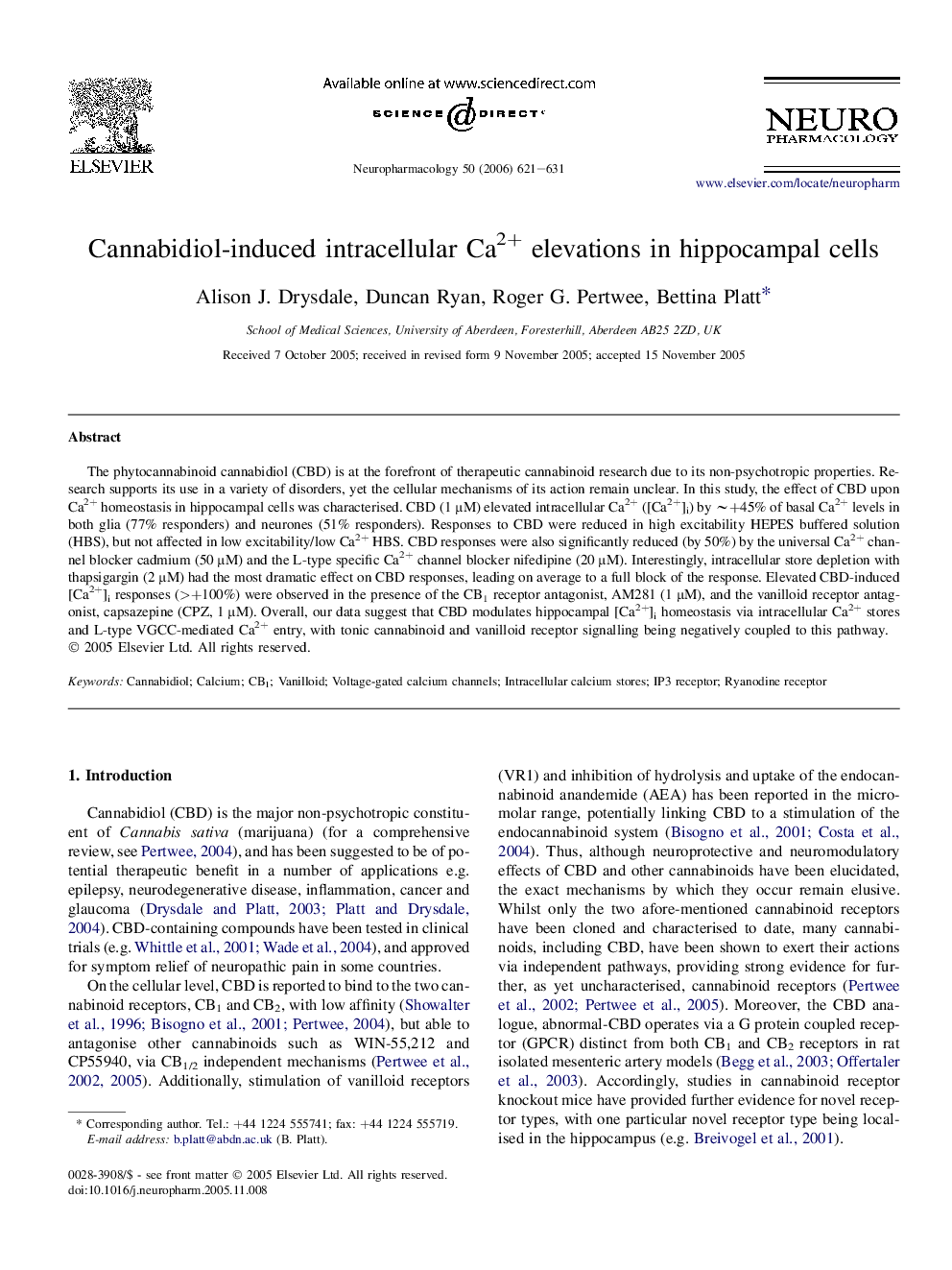| Article ID | Journal | Published Year | Pages | File Type |
|---|---|---|---|---|
| 2495190 | Neuropharmacology | 2006 | 11 Pages |
The phytocannabinoid cannabidiol (CBD) is at the forefront of therapeutic cannabinoid research due to its non-psychotropic properties. Research supports its use in a variety of disorders, yet the cellular mechanisms of its action remain unclear. In this study, the effect of CBD upon Ca2+ homeostasis in hippocampal cells was characterised. CBD (1 μM) elevated intracellular Ca2+ ([Ca2+]i) by ∼+45% of basal Ca2+ levels in both glia (77% responders) and neurones (51% responders). Responses to CBD were reduced in high excitability HEPES buffered solution (HBS), but not affected in low excitability/low Ca2+ HBS. CBD responses were also significantly reduced (by 50%) by the universal Ca2+ channel blocker cadmium (50 μM) and the L-type specific Ca2+ channel blocker nifedipine (20 μM). Interestingly, intracellular store depletion with thapsigargin (2 μM) had the most dramatic effect on CBD responses, leading on average to a full block of the response. Elevated CBD-induced [Ca2+]i responses (>+100%) were observed in the presence of the CB1 receptor antagonist, AM281 (1 μM), and the vanilloid receptor antagonist, capsazepine (CPZ, 1 μM). Overall, our data suggest that CBD modulates hippocampal [Ca2+]i homeostasis via intracellular Ca2+ stores and L-type VGCC-mediated Ca2+ entry, with tonic cannabinoid and vanilloid receptor signalling being negatively coupled to this pathway.
